Edgar Allan Poe is a literary icon, renowned for his dark, suspenseful tales like “The Black Cat,” which explore the depths of human psychology and guilt, now available in various digital formats, ensuring his legacy endures.
Who is Edgar Allan Poe?
Edgar Allan Poe (1809–1849) was an American poet, short story writer, editor, and literary critic. Orphaned at a young age, he was raised by foster parents in Virginia. Known as a pioneer of detective fiction and the Gothic genre, Poe’s works are celebrated for their darkness, psychological depth, and poetic beauty. His writings, such as “The Raven” and “The Tell-Tale Heart,” explore themes of death, guilt, and the human psyche. A troubled life marked by personal loss and addiction ended in mystery, but his legacy as a master of horror and suspense remains unparalleled in American literature.
His Role in American Literature
Edgar Allan Poe holds a pivotal role in American literature, shaping the genres of horror, mystery, and detective fiction. His innovative storytelling and exploration of the human psyche influenced countless writers. Works like “The Black Cat” and “The Murders in the Rue Morgue” established him as a master of suspense and psychological insight. Poe’s contributions to literary criticism and poetry further solidified his legacy, making him one of the most studied and enduring figures in American literary history. His influence extends globally, with his stories continuing to captivate readers and inspire adaptations across various media.
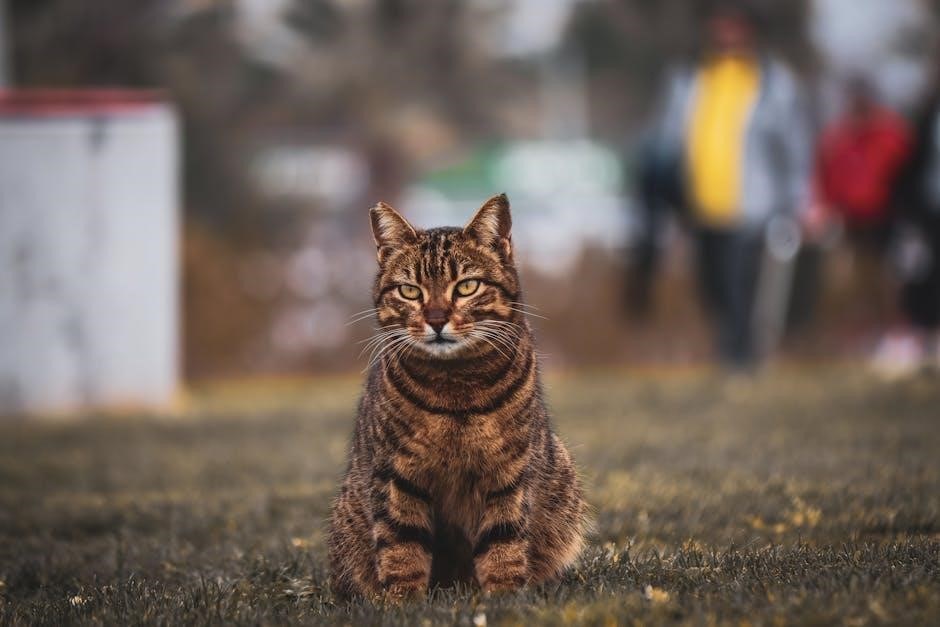
Background of “The Black Cat”
“The Black Cat” is a chilling tale by Edgar Allan Poe, first published in The Saturday Evening Post in 1843, exploring themes of guilt and psychological horror.
Publication History
“The Black Cat” by Edgar Allan Poe was first published in The Saturday Evening Post on August 19, 1843. This chilling tale was later included in Poe’s collection of short stories, solidifying its place in his literary legacy. The story has since been widely circulated in various formats, including free PDF downloads, allowing readers to access it easily. Its enduring popularity has led to numerous adaptations and interpretations, ensuring its presence in both academic and popular culture. The availability of “The Black Cat” in digital formats has further cemented its accessibility for modern audiences.
Historical Context of the Story
“The Black Cat” was written by Edgar Allan Poe in 1843, a time when Gothic literature was gaining popularity. The story reflects themes of guilt, madness, and the supernatural, resonating with the Victorian era’s fascination with the macabre; Poe’s personal struggles, including his wife’s illness and his own battles with alcoholism, influenced the dark, psychological tone of the narrative. The tale’s exploration of human depravity and the blurred lines between reality and fantasy captivated readers, making it a cornerstone of horror literature. Its historical significance lies in its ability to evoke enduring emotions, ensuring its relevance across generations.
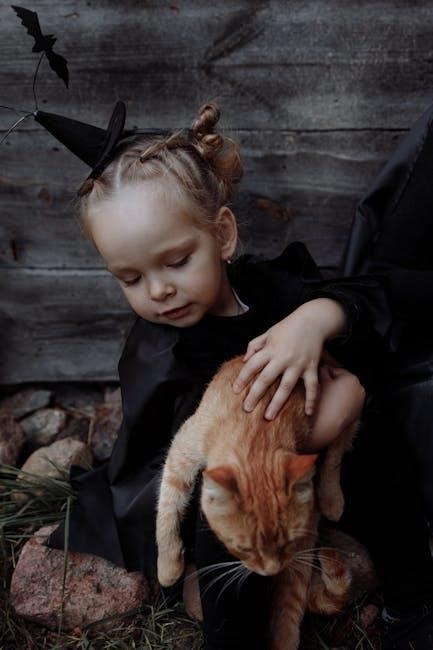
Plot Summary of “The Black Cat”
The narrator, an alcoholic, descends into madness, abusing his beloved black cat, Pluto, leading to its tragic death and horrifying, supernatural consequences that haunt him endlessly.
The narrator of “The Black Cat” is an unnamed, self-proclaimed alcoholic whose descent into madness and cruelty drives the story’s dark events. His instability and violent tendencies are central to the tale, showcasing Poe’s mastery of psychological complexity. The narrator’s unreliability adds depth, as his perceptions blur reality and fantasy. His actions, from torturing Pluto to the cat’s tragic demise, reveal a fractured mind consumed by guilt and paranoia. This character study highlights Poe’s exploration of the human psyche’s darker corners, making the narrator a compelling yet unsettling figure in American literature.
The Relationship Between the Narrator and Pluto
The narrator’s relationship with Pluto, his black cat, begins with deep affection, as Pluto is his favorite pet. However, this bond deteriorates due to the narrator’s alcoholism and growing instability. Pluto’s loyalty contrasts with the narrator’s cruelty, culminating in the horrific act of mutilating the cat. The narrator’s guilt and paranoia intensify after Pluto’s disappearance and mysterious return, leading to the cat’s eventual death; This twisted dynamic explores themes of abuse, guilt, and the destruction of innocence, highlighting Poe’s ability to weave psychological complexity into the narrative.
The Tragic Events Leading to the Cat’s Death
The narrator’s alcoholism and descent into madness lead to the tragic demise of Pluto. Initially, Pluto is the narrator’s beloved pet, but as the narrator’s instability grows, he becomes violent. One night, in a drunken rage, he maims Pluto by gouging out one of the cat’s eyes. Pluto disappears, but later, a mysterious black cat resembling Pluto appears in the narrator’s home. The narrator, consumed by guilt and paranoia, ultimately kills the cat with an axe. This horrific act symbolizes the narrator’s complete moral collapse and the destructive power of his unchecked emotions, amplifying the story’s eerie and haunting atmosphere.

Themes in “The Black Cat”
Guilt and madness intertwine as the narrator’s descent into alcoholism leads to horrific acts, while the supernatural and uncanny elements heighten the psychological horror, exploring darker human impulses;
Guilt and Madness
The narrator’s alcoholism fuels his descent into madness, leading to the horrific mistreatment and murder of Pluto. His guilt manifests in the appearance of another black cat, symbolizing his conscience. The story explores the psychological turmoil of a man consumed by self-destructive tendencies and paranoia. Poe masterfully weaves together the narrator’s mental unraveling with supernatural elements, creating a chilling narrative of guilt-driven horror. The tale highlights the devastating consequences of unchecked emotions and the blurred lines between reality and madness, leaving readers with a haunting reflection on the darker aspects of human nature and the inevitability of guilt.
The Supernatural and the Uncanny
In “The Black Cat,” Poe masterfully employs supernatural elements to create an uncanny atmosphere. The mysterious appearance of a second black cat, identical to Pluto, suggests a haunting or curse. This eerie presence amplifies the narrator’s psychological turmoil, blurring the line between reality and the supernatural. The cat’s unexplained behavior and its eventual discovery in the wall evoke a sense of dread and the uncanny. Poe’s use of these elements heightens the horror, leaving readers questioning the natural vs. the supernatural, and underscores the narrator’s descent into madness. The story’s unsettling tone is deeply rooted in these supernatural manifestations.
Alcoholism and Its Consequences
Alcoholism plays a central role in “The Black Cat,” driving the narrator’s destructive behavior. His addiction fuels cruelty, culminating in the horrific acts against Pluto. Poe vividly portrays the narrator’s downward spiral, where alcohol erodes morality and rationality, leading to irrational violence. The story highlights the devastating consequences of unchecked addiction, as the narrator’s mental state deteriorates, blurring the line between reality and delusion. This theme reflects Poe’s exploration of the darker aspects of human nature, where alcohol becomes both a catalyst and a justification for the narrator’s shocking actions, deeply impacting the story’s tragic unfolding.
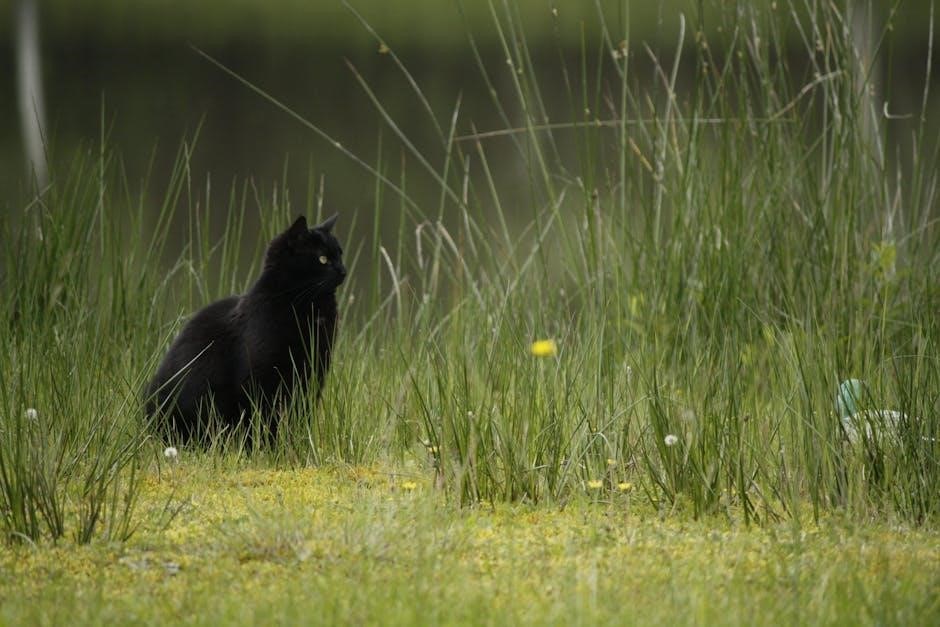
Key Characters
The narrator, an unnamed, troubled man, and Pluto, his black cat, are central. The narrator’s instability and Pluto’s symbolic presence drive the story’s dark, tragic events.
The Narrator: A Study of His Psychology
The narrator of “The Black Cat” is a deeply troubled individual, driven by alcoholism and a descent into madness. His psychological state is marked by instability, guilt, and a lack of self-control. Initially, he is affectionate toward Pluto, his black cat, but his addiction gradually erodes his sanity. His actions, including the horrific torture and murder of Pluto, reveal a mind consumed by darkness and irrationality. The story serves as a chilling exploration of mental deterioration, showcasing how guilt and madness can destroy a man’s humanity. Poe masterfully portrays the narrator’s unraveling psyche, leaving readers unsettled by the depths of human depravity.
Pluto: The Symbolism of the Black Cat
Pluto, the black cat in Edgar Allan Poe’s “The Black Cat,” symbolizes death, bad omens, and the supernatural. Initially, Pluto is a beloved pet, representing innocence and companionship. However, as the narrator’s alcoholism worsens, Pluto becomes a target of his cruelty, mirroring the destruction of the narrator’s own soul. The cat’s appearance and its eventual mutilation and death serve as a haunting metaphor for the narrator’s guilt and descent into madness. Pluto’s presence also underscores the theme of retribution, as the cat’s ghostly return haunts the narrator, embodying the inescapable consequences of his crimes. The black cat thus becomes a powerful symbol of death and moral decay.
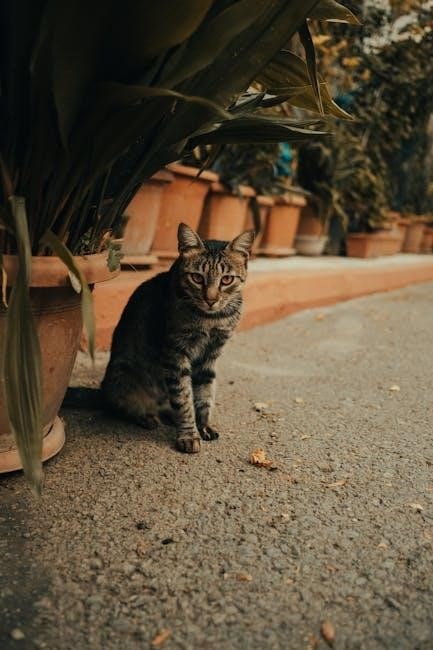
Literary Devices
Poe masterfully employs suspense, irony, and vivid imagery to create a haunting atmosphere, drawing readers into the narrator’s descent into madness and horror, showcasing his literary brilliance.
Use of Irony in the Story
Poe’s “The Black Cat” is rich with irony, particularly in the narrator’s self-delusion. Despite his cruelty, he claims a love for animals, highlighting his moral hypocrisy. The story’s tragic ending, where the cat’s return after a fire symbolizes the narrator’s guilt, is a stark example of situational irony. The narrator’s attempt to hide his crimes ultimately leads to their revelation, underscoring the futility of his actions. This irony intensifies the psychological tension, making the narrative a masterful exploration of guilt and retribution.
Poe’s Mastery of Suspense and Horror
Poe’s “The Black Cat” exemplifies his unparalleled ability to craft suspense and horror through meticulous pacing and psychological depth. The narrator’s descent into madness is gradual, with each event escalating tension. The mutilation of Pluto and the mysterious reappearance of the cat create an atmosphere of dread. Poe’s use of dark imagery and the narrator’s unreliable perspective heightens the sense of unease. The story’s climax, where the cat’s cries expose the narrator’s crimes, is a chilling testament to Poe’s skill in blending suspense with horror, leaving readers on edge until the very end.
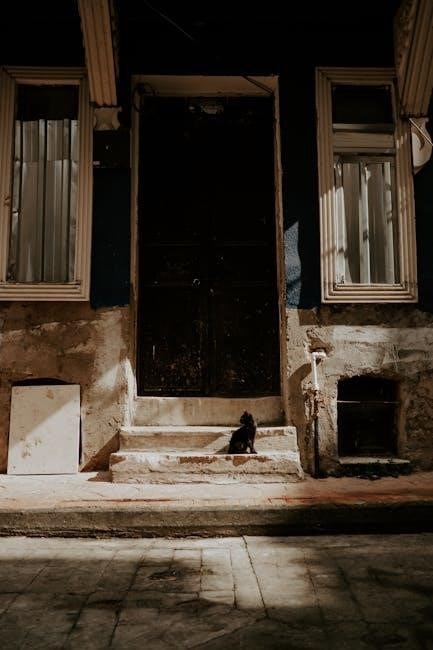
Symbolism and Motifs
In “The Black Cat,” the black cat symbolizes death and the narrator’s guilt, while the wall represents the concealment of sin and the inevitability of truth.
The Black Cat as a Symbol of Death
In “The Black Cat,” Pluto, the black cat, serves as a haunting symbol of death and the narrator’s inescapable guilt. The cat’s mysterious presence and tragic demise mirror the narrator’s downward spiral into madness. Pluto’s death, inflicted by the narrator, signifies the destruction of innocence and the unavoidable consequences of sin. The cat’s reappearance as a spectral figure further emphasizes the supernatural and the lingering remorse that haunts the narrator. Through Pluto, Poe masterfully explores themes of mortality, retribution, and the dark forces that drive human behavior, solidifying the cat’s role as a profound symbol of death and despair.
The Wall and Its Significance
The wall in “The Black Cat” holds profound symbolic meaning, representing both concealment and the narrator’s attempts to hide his crimes. It serves as a physical barrier between reality and the horror he has unleashed. The wall not only entombs Pluto’s corpse but also symbolizes the narrator’s psychological entrapment. Its discovery by the police underscores the inevitability of justice, while its role in the story’s climax highlights the inescapability of guilt. Through the wall, Poe illustrates the futility of attempting to hide one’s sins, as it ultimately becomes the instrument of the narrator’s undoing and revelation of his dark deeds.
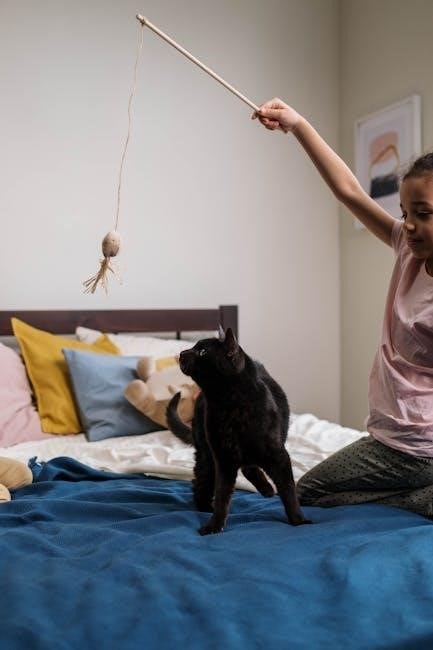
Cultural and Historical Impact
The Black Cat has left an indelible mark on literature and popular culture, inspiring countless adaptations and interpretations, cementing Poe’s influence on the horror genre globally.
The Story’s Legacy in Popular Culture
Edgar Allan Poe’s “The Black Cat” has profoundly influenced popular culture, inspiring numerous adaptations in film, literature, and art. Its themes of guilt and madness resonate universally, making it a timeless classic. The story’s availability in PDF and digital formats ensures its accessibility to modern audiences, further cementing its legacy. References to the tale appear in music, cinema, and even tattoos, showcasing its enduring appeal. Its exploration of the darker aspects of human nature continues to captivate readers and inspire creators, solidifying Poe’s influence on the horror genre and beyond.
Adaptations and Interpretations
Edgar Allan Poe’s “The Black Cat” has inspired countless adaptations, including films, plays, and graphic novels, each interpreting the tale’s dark themes in unique ways. The story’s psychological depth and eerie atmosphere have captivated audiences, leading to reinterpretations in various media. PDF versions of the story, widely available online, have further expanded its reach, allowing modern readers to engage with the narrative. Scholars and creators continue to explore the story’s symbolism, particularly the black cat as a harbinger of death and guilt, ensuring its enduring relevance in popular culture and academic discourse.
Psychological Insights
The narrator’s descent into madness, driven by guilt and alcoholism, reveals the psychological turmoil and destructive nature of unchecked emotions in Poe’s haunting tale.
The Narrator’s Mental State
The narrator of “The Black Cat” exhibits a deeply unstable mental state, driven by alcoholism and a growing sense of guilt. His actions, such as torturing Pluto, reveal a descent into madness. The story highlights his psychological deterioration, as he becomes increasingly paranoid and violent. His inability to control his impulses underscores his fragile psyche. The narrator’s mental state is further complicated by his refusal to accept responsibility for his actions, leading to a tragic cycle of self-destruction. This exploration of his mind showcases Poe’s mastery of psychological horror, delving into themes of guilt, madness, and the darker aspects of human nature.
The Role of Trauma and Revenge
Trauma and revenge are central themes in “The Black Cat,” as the narrator’s past hardships and inner turmoil fuel his destructive behavior. His alcoholism and abusive actions toward Pluto stem from unresolved psychological wounds. The story suggests that trauma can lead to a cycle of revenge, both against oneself and others. The narrator’s descent into madness is accelerated by his inability to escape the guilt of his actions, symbolized by the black cat’s haunting presence. This interplay of trauma and revenge creates a dark, psychological landscape, showcasing Poe’s ability to explore the devastating consequences of unchecked emotions and past pain.
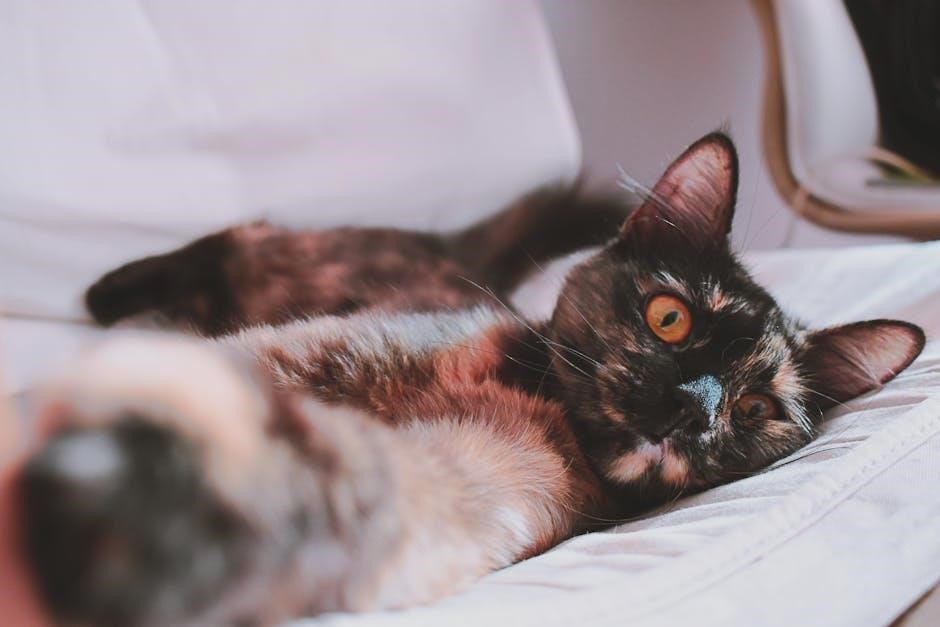
Comparative Analysis
In “The Black Cat,” Poe explores guilt and madness, similar to “The Tell-Tale Heart,” but with a darker supernatural twist, enhancing psychological horror elements significantly.
Similarities with Other Poe Stories
Like “The Tell-Tale Heart” and “The Fall of the House of Usher,” “The Black Cat” explores themes of guilt, madness, and the supernatural. Poe’s signature unreliable narrator, found in many of his works, drives the psychological tension. The story’s dark, gothic atmosphere and focus on the darker aspects of human nature align with Poe’s typical style. The use of a beloved pet as a central element mirrors the emotional depth seen in “The Raven,” where loss and mourning are central themes. These similarities highlight Poe’s consistent exploration of the human psyche’s darker corners, reinforcing his mastery of horror and suspense.
Differences from Poe’s Other Works
While “The Black Cat” shares many themes with Poe’s other works, it differs in its focus on alcoholism as a driving force for horror. Unlike “The Fall of the House of Usher,” which emphasizes family curses, or “The Tell-Tale Heart,” which centers on guilt-induced paranoia, “The Black Cat” grounds its terror in the narrator’s addiction and its consequences. The story also lacks the supernatural elements present in much of Poe’s work, instead relying on psychological decay and brutal reality. This makes it a unique exploration of personal vice and its destructive power, setting it apart from Poe’s more fantastical tales.
Edgar Allan Poe’s “The Black Cat” remains a haunting tale of guilt, madness, and the supernatural, ensuring its enduring appeal and influence on horror literature to this day.
The Enduring Appeal of “The Black Cat”
Edgar Allan Poe’s “The Black Cat” captivates readers with its exploration of guilt, madness, and the supernatural. The story’s chilling narrative, combined with its psychological depth, continues to resonate deeply. The black cat, Pluto, serves as a haunting symbol of death and retribution, while the narrator’s descent into darkness offers a gripping study of human frailty. Its themes of alcoholism and violence add layers of complexity, making it a timeless horror classic; The tale’s ability to evoke fear and introspection ensures its enduring popularity, solidifying Poe’s legacy as a master of the macabre.
Poe’s Lasting Influence on Horror Literature

Edgar Allan Poe’s “The Black Cat” has left an indelible mark on horror literature, influencing countless writers and adaptations. His mastery of psychological terror, suspense, and the exploration of the darker aspects of human nature has set a benchmark for the genre. The story’s themes of guilt, madness, and the supernatural continue to resonate, inspiring modern reinterpretations in film, literature, and popular culture. Poe’s ability to weave complex emotions with chilling narratives ensures his work remains timeless, solidifying his role as a pioneer and enduring figure in horror literature. His legacy endures through the digital availability of his works.

